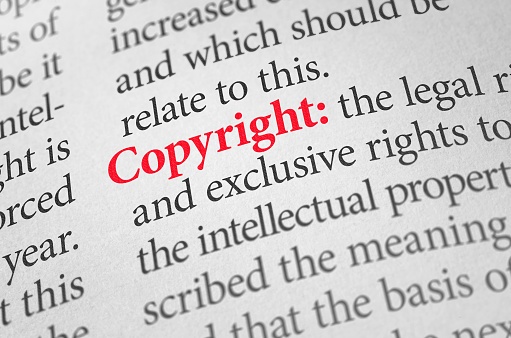When a Copyright Critic Goes Low, the Copyright Alliance Goes High

Note to readers: Recently, Wired magazine published an opinion piece by Josh Tabish. We attempted to have the following response (see below) published by Wired, but they refused to do so. So we are publishing it on our blog page in the hopes that readers of Mr. Tabish’s piece will also read our response – to ensure they get a fuller and more accurate understanding of the facts and the issues.
Recently, OpenMedia’s Campaigns Director, Josh Tabish, authored an op-ed in Wired that heavily criticized the Washington, D.C.-based Copyright Alliance I lead. Unfortunately, his opinion piece doesn’t accurately portray the Alliance, our efforts, our membership, or our views.
My intention in writing a follow-up article is to dispel the misconceptions and mischaracterizations of Mr. Tabish’s piece, and invite Wired readers to learn more about the “real Copyright Alliance” and make their own conclusions.
Tabish asserts we only represent large record labels and movie studios. But the truth is that the Copyright Alliance is a non-profit, non-partisan public interest and educational organization representing the copyright interests of more than 1.8 million individual creators and over 13,000 organizations throughout the United States and across the spectrum of copyright disciplines. Our creator members range from struggling artists, musicians, writers and photographers who are just starting out… to authors, directors and performers responsible for the entertainment enjoyed by millions every day… to journalists, photographers, editors and publishers like the team at Wired magazine. Indeed, the Alliance’s members are as diverse and varied as the music, books, films, photographs, software and other works they create.
The Alliance, which will soon celebrate its 10th anniversary, is dedicated to advocating policies and initiatives that promote and preserve the value of copyright, as well as to protecting the rights of both small and large creators and innovators, regardless of size or scope. A helpful introduction to the Alliance would be to visit our website located at www.copyrightalliance.org.
On the site, you’ll find an abundance of policy information, research, campaigns, polls, blogs, Copyright Q&As and more – dedicated to informing the copyright community, as well providing resources for anyone in need of support. Please also check out the Alliance’s website homepage, which regularly spotlights individual creators such as musician / entertainer Robin Jackson from Portland, Oregon, who holds 50+ copyrights for his work.
An example of a recent initiative by the Alliance in support of the copyright community is the Change.org petition that we co-sponsored with CreativeFuture in support of creators’ rights. The petition garnered more than 35K signatures and resulted in an open letter to political candidates.
What you won’t find on our site or in the letter that we sent to President Trump (which precipitated Tabish’s op-ed), is the Copyright Alliance asking “the newly elected President to increase the powers held by copyright holders” or for “more restrictive copyright rules,” “stronger rules,” or “more restrictive copyright” as Tabish claims in his article. It’s easy to verify this for yourself. Just check out the letter and our site.
The Copyright Alliance’s letter discusses the economic contributions of the creative industries; the threat online theft poses to creators; and that current copyright laws promote creativity, innovation, speech and expression. The only request the Alliance makes is against “weakening copyright or making it harder for creators to obtain or maintain their protections.” Tabish also includes an extensive discussion that criticizes the Copyright Alliance for pushing “notice-and-staydown” rules. Read the Alliance’s letter and look at our site. You will not find anything of the kind.
On the contrary, the letter reflects our support for the copyright community—a community that propels the U.S. economy by adding $1.2 trillion to the U.S. GDP and employing nearly 5.5 million men and women, with average compensation 38% higher than the average for all U.S. workers. From a global perspective, sales of U.S. recorded music, television, video and motion pictures, software, newspapers, books and periodicals in foreign markets amounted to $177 billion, which exceeds exports of other major U.S. industries such as chemicals, aerospace, agricultural, electrical and pharmaceuticals.
It’s a community that, despite Tabish’s claims, continues to be victimized by global piracy. For example, Tabish notes the success of Netflix and Spotify but then fails to mention that Netflix and Spotify have identified piracy as a major concern for their businesses, and that music industry revenues fell from $14 billion to $7 billion between 2001 and 2015—losses largely attributed to online theft.
Protecting the community of creators (small and large) who work diligently and who need copyright laws—including built in free speech protections—to exist and to succeed is what the Copyright Alliance is all about. In this regard we agree with Tabish when he said that “Copyright law was originally intended to ensure creators could make a living,”and while there’s no doubt that the conditions have become more challenging today versus those faced decades ago, we believe this is still the case.
I invite you to get to know us and the many creators who are trying to make a living and maintain a career through their creative efforts by visiting our website: www.copyrightalliance.org, and to decide for yourself who and what the Alliance stands for rather than relying on someone else’s bombast.
photo credit: Zerbor/iStock/thinkstock

